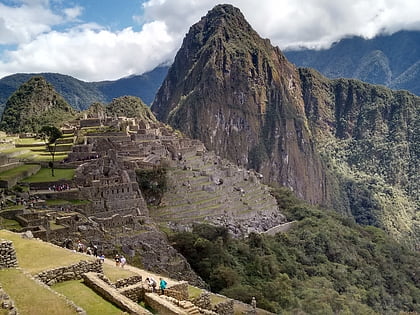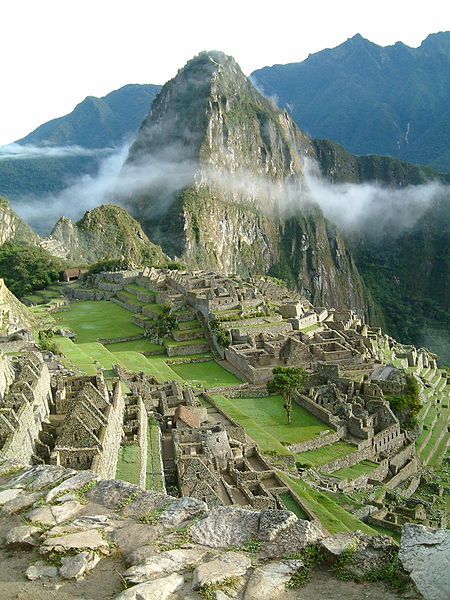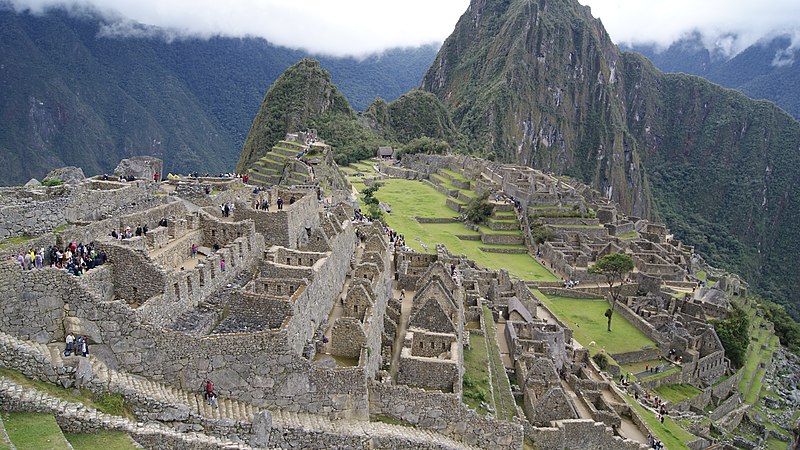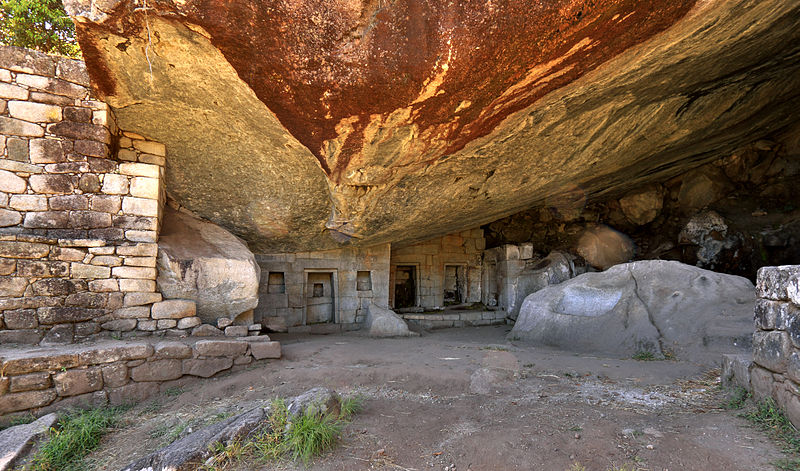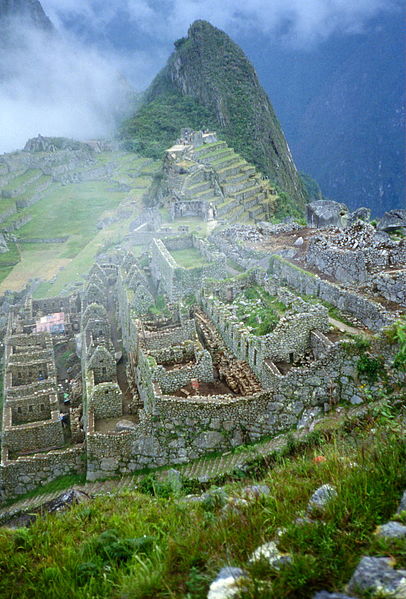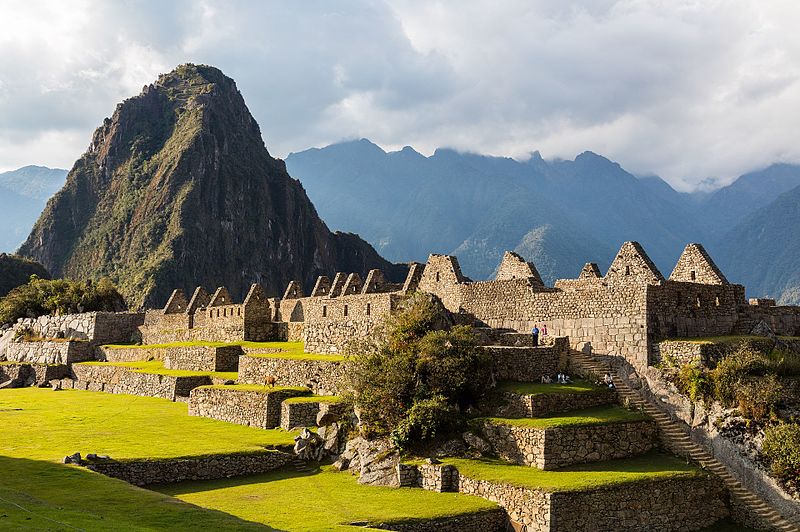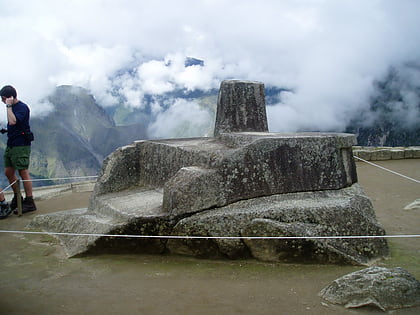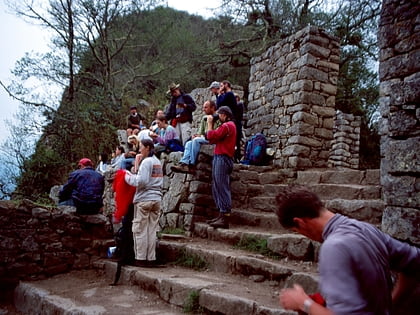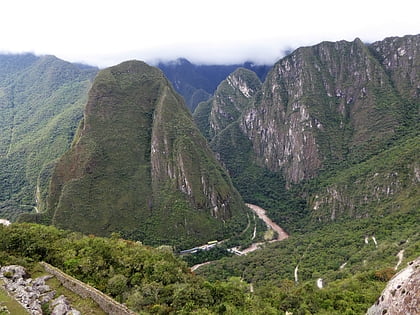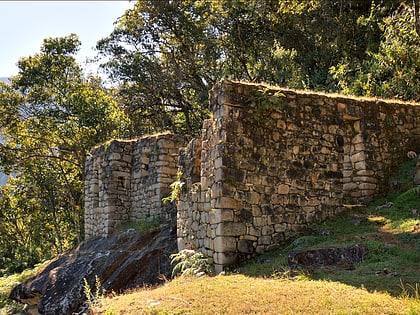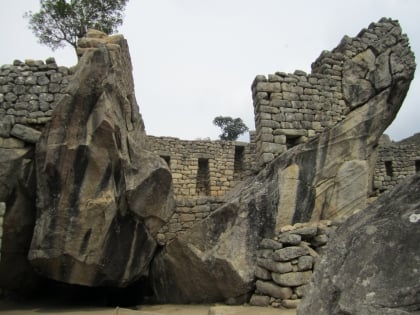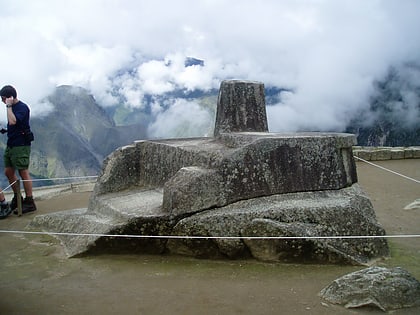Huayna Picchu, Machu Picchu
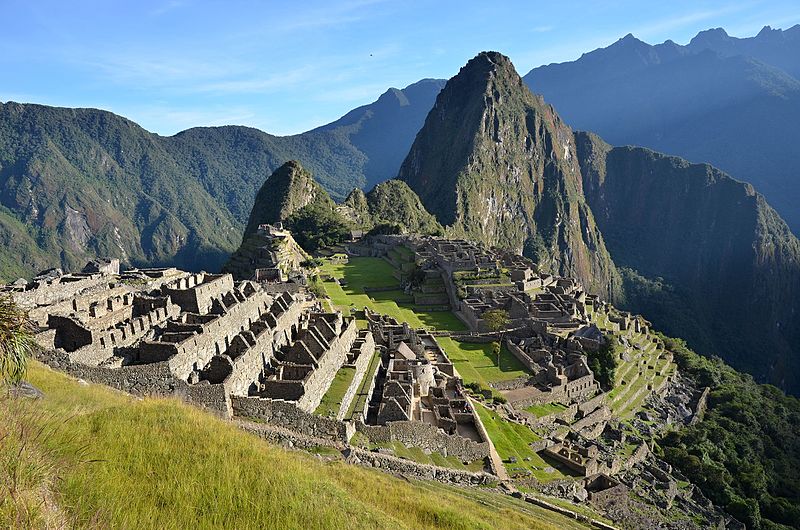
Facts and practical information
Standing sentinel over the ancient Incan city of Machu Picchu, Huayna Picchu is a towering mountain that offers one of the most iconic backdrops to this UNESCO World Heritage site. Known as the "Young Peak" in Quechua, the mountain's summit reaches an elevation of about 2,720 meters (8,920 feet) above sea level, inviting visitors to climb its steep, rocky paths for a breathtaking view of the ruins and the surrounding Andean landscape.
As a favored highlight for many tourists, Huayna Picchu is often featured in the classic photographs of Machu Picchu, with its sharp peak rising dramatically behind the famous archaeological site. The ascent to the summit is a challenging hike, requiring visitors to navigate narrow trails, steep staircases, and at times, sections with handrails and cables for support. Despite the demanding nature of the climb, which can take approximately 1.5 to 2 hours to reach the top, the panoramic vistas and the unique perspective of Machu Picchu are a worthy reward.
For those looking to embark on this adventure, it's essential to note that access to Huayna Picchu is limited to 400 visitors per day, split into two groups, to preserve the natural environment and the integrity of the trail. Tickets must be purchased in advance, often several months before your visit, and include entry to Huayna Picchu as well as the main Machu Picchu site.
The best time to climb Huayna Picchu is during the dry season, from May to September, when the weather is more predictable and the paths are less slippery. Hikers are advised to start early in the morning to avoid the midday sun and to have ample time to explore the summit, where remnants of Incan terraces and temples await.
Machu Picchu
Huayna Picchu – popular in the area (distance from the attraction)
Nearby attractions include: Intihuatana, Inti Punku, Putucusi, Temple of the Moon.
